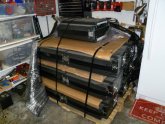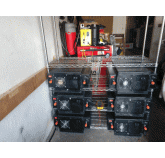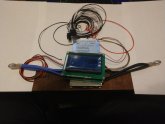Maast
Compulsive Tinkerer
Took a bit but they're here. Bought it on the 12th and they arrived on the 30th. UPS tracking said the pallet actually arrived in the local area the 24th. Not too terribly bad coming from the far side of the country. Pretty good deal for $300 a pop and they gave me a 'bakers dozen' for the 12 I paid for, which I think was exceedingly cool.
Well packaged -arrived well banded and wrapped. The pallet evidently got whacked once during transport as one of the posts is bent over but since I'll be removing the posts anyway its not that big of a deal. Still annoying though.
Now I have to get these monsters down to the basement & stripped down, then testing, testing, and more testing. It begins!

Well packaged -arrived well banded and wrapped. The pallet evidently got whacked once during transport as one of the posts is bent over but since I'll be removing the posts anyway its not that big of a deal. Still annoying though.
Now I have to get these monsters down to the basement & stripped down, then testing, testing, and more testing. It begins!













